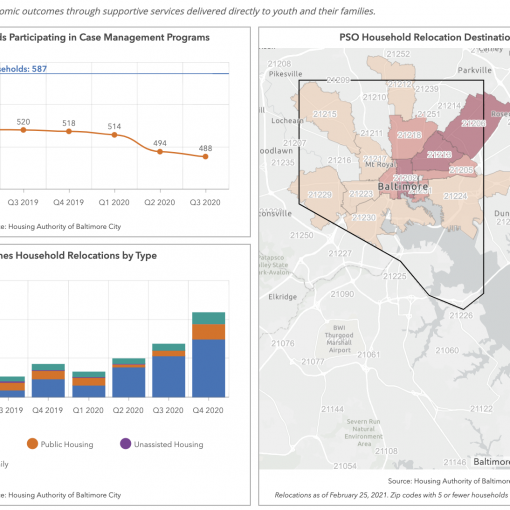
To paraphrase Al Pacino’s character in the 1999 film Any Given Sunday: “The [data] we need are everywhere around us.”
Joining the Legal Data & Design Clinic was an eye-opening experience for the inaugural class of student attorneys. Few of us probably realized the growth and appreciation that was in store for how data can, does, and will shape the legal world and the lives of those impacted by the law.
For instance, our access to public and client-provided data allowed our clinic to generate more informed analysis for our clients (and their clients) who face real-world legal, policy, or practical challenges associated with the law, some of which was demonstrated in our clinic’s advocacy for a new law to end the state’s suspension of drivers’ licenses for failure-to-pay traffic fines.
We have learned that analysis of legal data offers the possibility of informing and improving the criminal justice system. So, a more just society just requires more data and more data analysis? Well, it’s not that simple. Some thoughtful legal data analysis we encountered during the semester brought some of these criminal justice challenges into focus.
Take, for instance, the proliferation of risk assessment tools to assist judges in evaluating whether to release a defendant prior to trial.
Judges fear a defendant will commit a horrible crime if released before trial, according to Chelsea Barabas, Karthik Dinakar, and Colin Doyle, in their July 2019 New York Times opinion piece titled “The Problems With Risk Assessment Tools.”
The authors explain that “this fear has led judges to systematically overestimate pretrial violence.” However, “there are more legally innocent people behind bars in America today than there were convicted people in jails and prisons in 1980,” the authors write.
As a result, many jurisdictions have turned to algorithmic risk assessment tools to “harness big data to help judges make more informed, accurate decisions, thereby reducing jail populations while maintaining public safety.” These risk assessment algorithms can attempt to “calculate a person’s risk of future violence based on patterns” of similar criminal history or on the basis of one’s employment status, ZIP code, rental history, or even cellphone ownership.
This seems like a noble undertaking. Score one for legal data analysis, right? Not so fast…
The authors warn us that the application of “’big data’ forecasting to our existing criminal justice practices is not just inadequate—it also risks cementing the irrational fears and flawed logic of mass incarceration behind a veneer of scientific objectivity.” The authors further caution that “risk assessments are virtually useless for identifying who will commit violence if released pretrial.” Because “pretrial violence is so rare, it is virtually impossible for any statistical model to identify people who are more likely than not to commit a violent crime,” the authors argue. “The fact is a vast majority of even the highest-risk individuals will not commit a violent crime while awaiting trial.”
The authors’ piece imparts that, while the data we need are everywhere around us, the misapplication of that legal data can generate undesirable consequences, even when motivated by noble intent. That said, sometimes legal data is simply behind the times, at best, or woefully incomplete, at worst.
For communities adversely impacted by higher rates of incarceration, the categories of legal data collection need to be as detail-oriented as the analysis being conducted.
“Criminal justice data often uses racial and ethnic categories to break down the disproportionately high representation of Black and Hispanic populations in prisons and jails. Beyond these categories, however, lies the illusive ‘other’ designation, which lumps together Asian Americans, Pacific Islanders, Native Hawaiians, and of course, American Indians and Alaskan Natives,” according to Roxanne Daniel, an intern with the Prison Policy Initiative, in her blog titled “Since you asked: What data exists about Native American people in the criminal justice system?”
Daniel noted that “disproportionate incarceration rates for these groups are not negligible,” and the Bureau of Justice Statistics practice of “[categorizing] American Indian/Alaskan Natives as ‘other’” in its data “obscures differences between these groups and makes it difficult to determine how the justice system plays a role in Native communities.” This example demonstrates how a lack of detailed data can undermine efforts to better understand how the law might affect certain communities.
Sometimes other types of data might have legal implications—and save lives.
“An Arkansas county so rural it has just three incorporated towns and not a single stretch of interstate suddenly emerged this week as one of the nation’s coronavirus hotspots,” as reported by Cary Aspinwall and Joseph Neff in the Marshall Project article entitled “These Prisons Are Doing Mass Testing For COVID-19—And Finding Mass Infections.” Per Aspinwall and Neff, “ground zero in Lincoln county [is] a state prison farm” where a single positive test in early April has grown to “14 staffers and more than 680 of the prison’s nearly 1,700 prisoners” testing positive for the virus according to test results from the week of April 24, 2020.
The reason for the explosion in numbers of positive cases? Aspinwall and Neff attribute the numbers to “the state’s newly aggressive testing program” in which Arkansas “hopes to reduce the virus’s spread by tracking all cases, even for prisoners or staff who are asymptomatic.”
In the age of COVID-19, testing results across the country, as detailed by Aspinwall and Neff, demonstrate how the lack of social distancing controls within prisons jeopardizes the health and well-being of prisoners and those who guard them. This data should likely be factored in discussions and decisions related to pretrial incarceration and prisoner releases. It might save lives.
As all of the student attorneys approach graduation, our experience with the Legal Data & Design Clinic sends us forth having fostered a nuanced and critical appreciation for how legal data analysis in a complex world can impact how we advocate for our future clients and for a more just society. The truth is that the data we need are everywhere around us, but so too are the lives in those numbers that need advocacy. The challenge now is to help ensure the lessons of legal data analysis imparted during this clinic are applied effectively as future advocates. Lives may depend on it.



